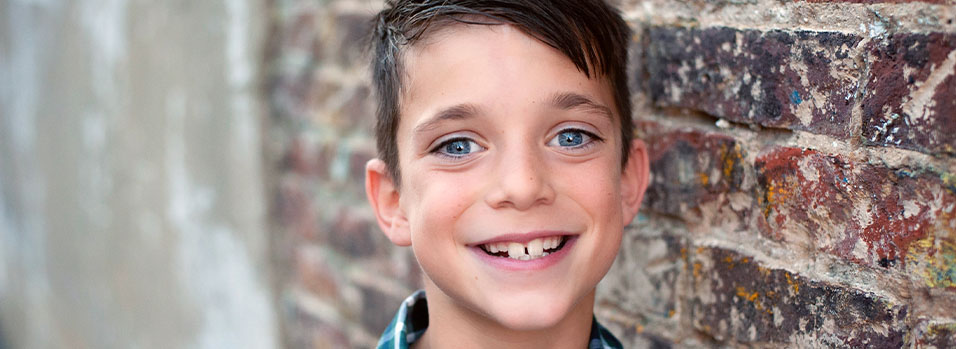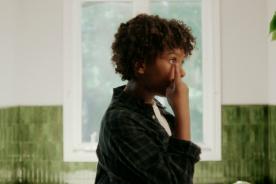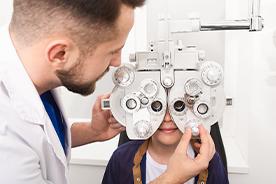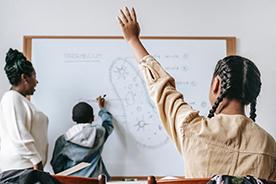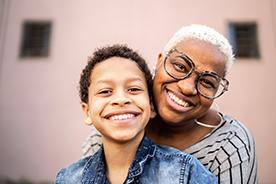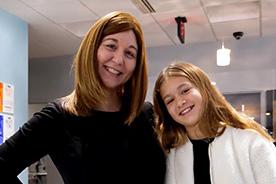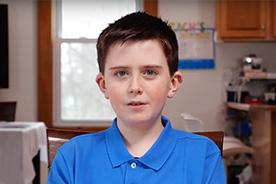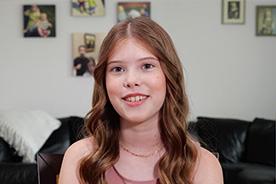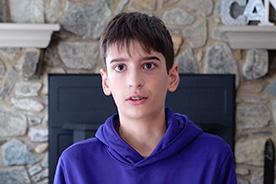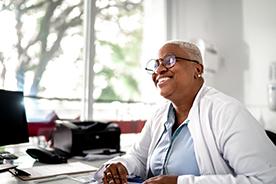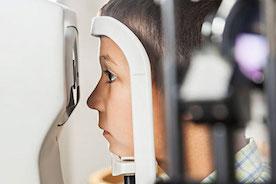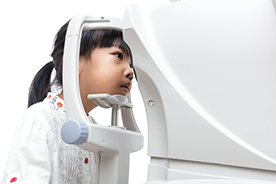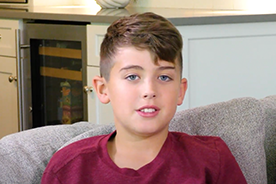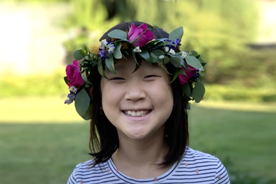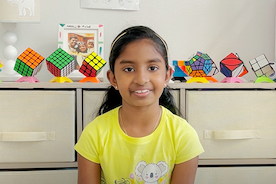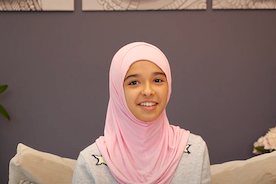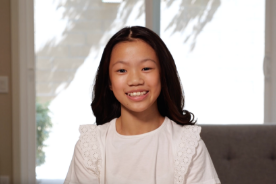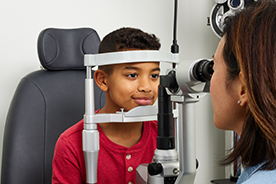When a parent learns their child has been diagnosed with myopia, it can prompt some questions. What’s important to remember is that for every child who receives a myopia diagnosis, there’s a pathway to successful myopia management. For parents with myopia, this may include a different treatment approach than the one they were given as children. The important thing is to get started with treatment. To help parents visualize where they are in the journey and what’s ahead, here’s a summary of what they can expect.
Increase your and your child’s awareness of nearsightedness
Since myopia can have a genetic component, parents who have experienced myopia themselves may wonder if their young children are seeing well. Of course, most parents may not realize their child is experiencing changes in their vision.
For those who aren’t familiar with myopia, gaining awareness can arm them with knowledge and, in turn, help them support their child. Myopia requires timely intervention to provide immediate vision correction and minimize the risk of long-term eye health complications later in life associated with myopia progression.
Early detection and intervention are key
Even attentive parents won’t always know when their child experiences blurry vision. Kids have a natural way of adapting to their circumstances, so they won’t often know or verbalize if far away objects are blurry. A noticeable change in the classroom, like not being able to read the writing on whiteboards, is a common indication a child may have myopia. There are conditions that people with myopia are at greater risk of developing if it goes untreated, so there is a sense of urgency to be seen by an eye care professional.
The best way to know if a child has changes in their vision is through a comprehensive eye exam with their eye doctor.
“Even if parents don’t get around to taking their children in for an infant eye exam between the ages of 6 and 12 months, the 3-year-old could be hit or miss, too, based on today’s awareness levels. But before entering kindergarten, that’s when we should assess the child’s entire visual system,” said Dr. Justin Kwan, OD, FAAO, CooperVision Senior Manager of Myopia Management. “The screening used at the pediatrician’s office only does one or two screening metrics, while a comprehensive eye exam evaluates nearly 20 different things that are important.”
Diagnosis and treatment of nearsightedness (myopia)
Parents who suspect their child might have nearsightedness or are concerned with eye problems in their children should contact their eye doctor to schedule a comprehensive eye exam, regardless of whether their child is due for their annual checkup. During the exam, the doctor will take a careful history, which may include asking about the parents’ vision and vision history. The doctor will also complete all the appropriate elements of the exam to arrive at a diagnosis. If the child needs myopia management treatment, those options will be shared at that time. Parents who don’t have an eye doctor for their child should consider one whose practice specializes in myopia management. CooperVision’s MiSight® 1 day doctor locator can help you find an eye doctor certified to prescribe MiSight® 1 day lenses, the first and only FDA-approved* soft contact lenses proven to slow the progression of myopia in children aged 8-12 at the initiation of treatment.†1
Modify your child’s lifestyle to minimize worsening
Once the parent, child, and doctor agree on the most appropriate myopia treatment plan, it’s important to help support the child as they incorporate certain changes into their lifestyle. For instance, limiting the amount of near work a child does each day, such as using a tablet or computer, could help slow the progression of their myopia2 and encouraging more time spent outdoors might help slow the eye elongation that causes myopia.3 If the child’s treatment plan includes contact lens wear, providing them with insertion and removal instructions will help them quickly get comfortable with a new daily routine.‡4
“It’s near impossible to tell the future for any one child, and the word prevent is tough because it’s absolute, and you can’t prevent anything 100%. But we can minimize the risk of myopia getting worse,” Kwan says. “We don’t know if any one child is going to be a slow progressor or a fast progressor, so at this point in time, we know that as they are growing, we should be treating it from getting worse so quickly.”
Dr. Kwan suggests making sure there are breaks from any near work, which means things that are held one foot or closer. Work on the computer and iPad are considered near work. He notes that it’s also important that breaks from near work are 5 minutes or longer to limit the worsening of myopia. Sending children outside where there is bright natural light—which signals to the eye to slow down its elongation—may also keep myopia from getting worse as quickly.5
“Whatever you can get in terms of outdoor time will help your children,” Kwan says. “It’s important to give your eyes a break. For myopia, 20 seconds isn’t long enough.”
Long-term planning to prevent myopia from getting worse
“The long-term part, ironically, is starting treatment as early as possible. Because the sooner we start, the sooner we can finish, which has financial benefits and lower levels of myopia at the very end,” Kwan says. “It’s using a medical device that the child will use every day and having a great two-way conversation with your optometrist or ophthalmologist at the six-month visits or more frequently as needed. It’s really trying to make sure your child is getting as much treatment as many hours a day as possible, and if something becomes challenging, that we make sure we address that sooner rather than later.”
Once a child is diagnosed with myopia, following a treatment plan can help set them up for a lifetime of good vision. A regular schedule of exams with an eye care professional is an essential part of protecting a child’s vision into adulthood. This is particularly important for those with myopia, since they’re more prone to a variety of eye-health complications later in life, including glaucoma, myopic maculopathy and retinal detachment.6
Dr. Kwan recommends also considering eye health early for the rest of the family. Younger siblings often aren’t seen as early as they should be, but getting ahead of the game during an older child’s treatment can lead to better vision and eye health outcomes for the whole family.
Parents may have questions following their child’s myopia diagnosis. Eye care professionals can provide answers—from treatment options to lifestyle modifications—that can help slow myopia progression.
Wherever a child’s myopia management journey takes them, there are many resources to support parents’ knowledge and help the child protect their vision and eye health, both now and in the future.
If you want to find a MiSight® certified eye care professional and learn about free trials and rebates offered, click the links here.

